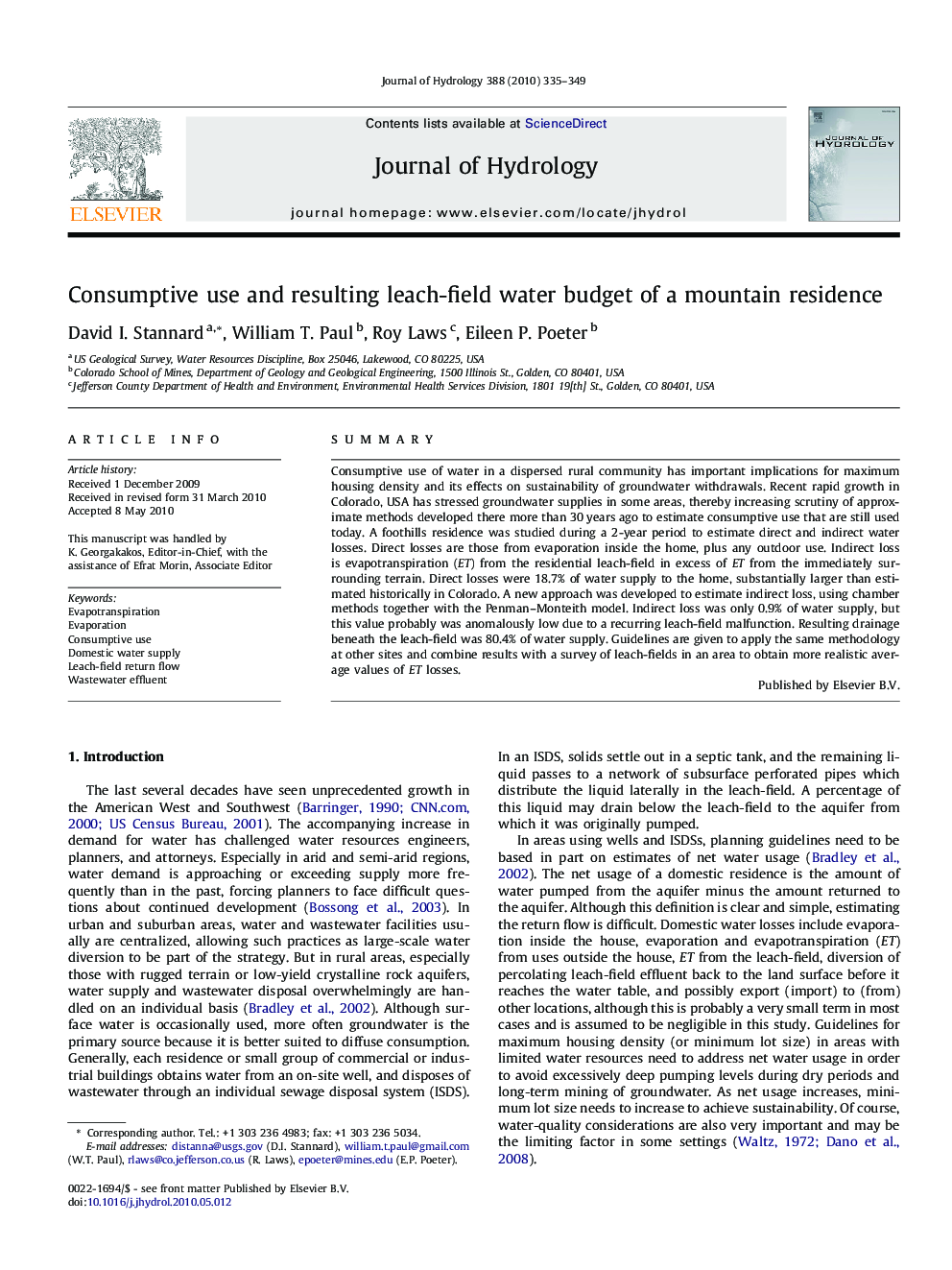| Article ID | Journal | Published Year | Pages | File Type |
|---|---|---|---|---|
| 4578167 | Journal of Hydrology | 2010 | 15 Pages |
SummaryConsumptive use of water in a dispersed rural community has important implications for maximum housing density and its effects on sustainability of groundwater withdrawals. Recent rapid growth in Colorado, USA has stressed groundwater supplies in some areas, thereby increasing scrutiny of approximate methods developed there more than 30 years ago to estimate consumptive use that are still used today. A foothills residence was studied during a 2-year period to estimate direct and indirect water losses. Direct losses are those from evaporation inside the home, plus any outdoor use. Indirect loss is evapotranspiration (ET) from the residential leach-field in excess of ET from the immediately surrounding terrain. Direct losses were 18.7% of water supply to the home, substantially larger than estimated historically in Colorado. A new approach was developed to estimate indirect loss, using chamber methods together with the Penman–Monteith model. Indirect loss was only 0.9% of water supply, but this value probably was anomalously low due to a recurring leach-field malfunction. Resulting drainage beneath the leach-field was 80.4% of water supply. Guidelines are given to apply the same methodology at other sites and combine results with a survey of leach-fields in an area to obtain more realistic average values of ET losses.
